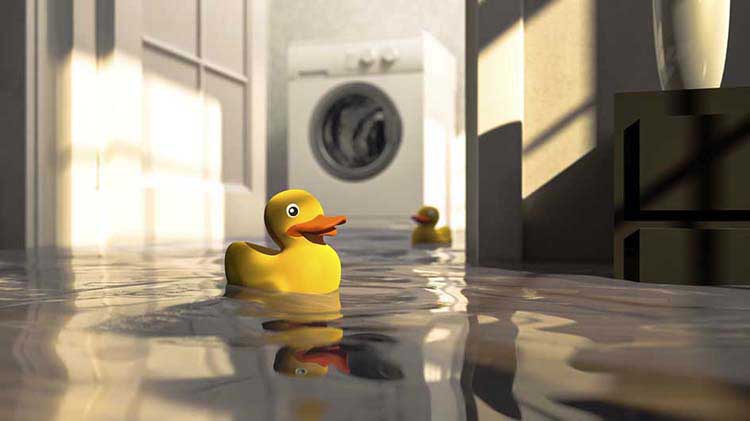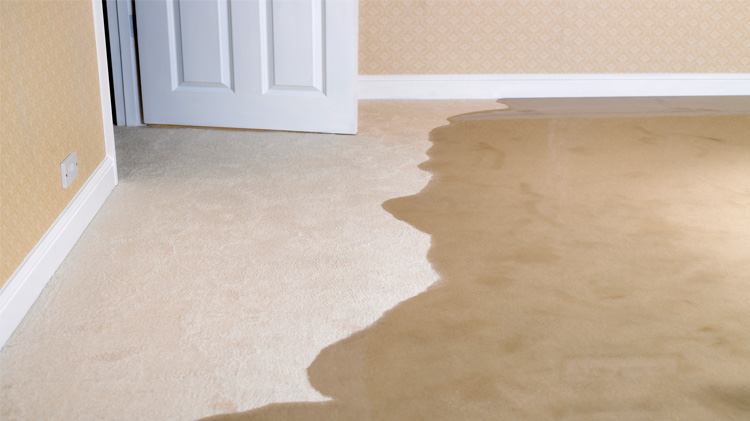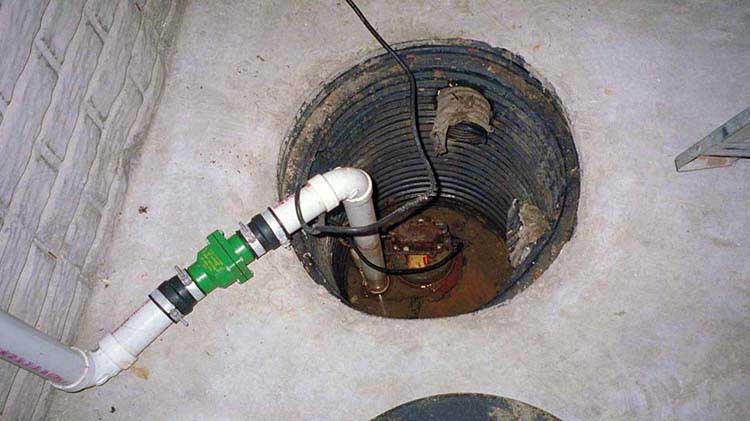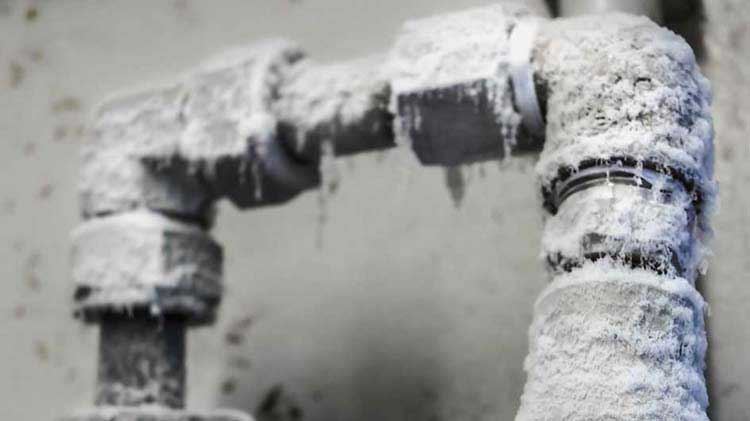Flooded basement? How to deal with common causes
Wet basement problems can cost you thousands of dollars. Here are steps to help identify the source of the water and ways to minimize your risk.
Unexpected water in your basement can damage walls and floors, destroy carpeting, ruin furniture and lead to mold. As these spaces are so often used for storage, a wet basement can ruin irreplaceable items like photo albums, antiques and family heirlooms. Consider taking extra precautions with items stored in areas that may flood.
Due to the risk of electrocution, avoid going into a flooded basement until you know the electricity is turned off.
When you experience a flooded basement for the first time, try to determine if the water problems are going to recur or if it was a one-time event. If water in your basement is a consistent problem, it's time to start making decisions. Determining where the water is coming from is the first step in helping solve this problem.
What are the common causes for water in my basement?
Beyond observable flooding around your home and in your neighborhood, there can be many common sources.
Surface water leaking into basement
If this is the first instance of water problems in your basement, check to see if surface water is draining down next to the foundation walls. Water coming in at one location or only at the exterior foundation wall indicates surface water problems. Here are some things to look for once you get outside.
- Overflowing gutters: Try to keep gutters clean of debris as part of your home routine maintenance program. Depending on the surrounding trees, gutter cleaning may be needed a few times a year. Products are also available to help prevent leaves from getting into the gutters.
- Clogged downspouts: If you don't mind getting wet, you can do a self-check (see that your gutters are cleaned out first). After at least 15 minutes of heavy rain, check your gutters. If you see any water overflowing, you may likely have clogged downspouts. Any water overflowing out of the gutters will typically run down next to the house foundation. Even if the water isn't getting into the basement, it could be eroding soil from under the house footings, which can lead to cracking of walls and ceilings.
- Downspout distance: Downspouts should extend 10 feet from your home to help discharge water runoff away from your foundation.
- Pavement slope: Sometimes paving settles over time and water flow can change direction toward the house. If this is the case, the paving should be removed and replaced so it slopes away from the home.
- Landscape slope: Does your yard or the land around your home slope away from your home? It should.
- Look for any depressions in the ground next to the foundation walls. If any are found, fill in the area with dirt so the water drains away from the house. Use a clay-type soil that sheds water instead of sandy soil that allows water to soak into the ground. See that at least eight inches is kept between the top of the dirt or grass and any wood or stucco on the house.
- If there are large hills nearby sloping toward your home, and you think they may be causing the problem, a civil engineer may be required to analyze the situation and determine the appropriate solutions.
- Sealant: Check sealant around pavement that borders the house, as it may crack over time due to age or incorrect installation. Consider removing and replacing any cracked sealant.
- Irrigation: Avoid placing lawn irrigation next to the house. If this can't be avoided, you might want to instruct the installer to limit the amount of water dispersed next to the house. See that the irrigation system includes a working rain gauge, so the system does not turn on when there has already been plenty of rain for the plants and lawn.
Hydrostatic pressure caused by groundwater
A couple things you may encounter and need to check on in some homes include:
- Groundwater: If no surface water sources are found, then the source of the water may be subsurface groundwater under hydrostatic pressure. Unfortunately, subsurface groundwater problems are often more difficult and more expensive to fix than surface groundwater problems. When the groundwater levels outside the basement rise above the level of the floor, the basement acts like a boat in a pond. If a boat is sitting in water, water will leak in through any open cracks or holes. It works the same way with a basement. Hydrostatic pressure can push water through hairline cracks. Signs of this are water coming up through cracks in the basement concrete floor or water coming in at multiple locations.
- Location of the drain system: You may have an older house in town that has a basement and no sump pump. If so, it's likely the perimeter foundation drain system connects directly into the city storm sewer system. If the level of the basement is below the street level, there is the potential of storm water backing up in the city storm sewer system and being pushed into the perimeter foundation drain system. This can saturate the soils around the house at the basement level with storm water under hydrostatic pressure, causing water to leak in.
Regardless of where it's coming from, an option to help control subsurface groundwater is to install some type of perimeter drain system to relieve hydrostatic pressure. Then, the groundwater is pushed into the drain system and not into areas where it can damage carpets, walls or belongings. The water drains by gravity into a sump pit where a sump pump discharges it out of the house.
There are two basic types of drain systems for wet basements
- Perimeter above-slab gutter system. This system is installed at the base of the exterior foundation walls on top of the floor slab. It doubles as a base material for the wall.
- Below-slab perimeter drainage system. The below-slab system requires the partial removal of the concrete floor slab and installation of drainage pipe, making it more expensive than the base gutter system.
An under-floor drainage system may be the better option because the under-floor drains relieve the hydrostatic pressure before the water reaches the bottom of the floor slab.
Backup of storm sewer water from the municipal storm sewer system
In many older houses with basements (mostly pre-1980), there is a perimeter foundation drain outside the exterior wall, at the level of the basement floor, next to the footings. A pipe was usually installed from the perimeter foundation drain to the street where it was connected to the city storm sewer system.
This can become a problem as the city storm sewer system becomes too small when more development causes more rain runoff. When this happens, the rainwater in the sewer system can get so high that water flows backwards toward the house.
Usually, the installation of an interior perimeter basement drain system connected to a sump pump will take care of the problem. If it doesn't, the (more expensive) alternative is to dig up and cap the pipe that is running from the house to the street from the perimeter foundation drain. However, this is not always possible; many times, this pipe is also draining sanitary waste from toilets and sinks in the house.
If you believe you have this problem, contact an experienced contractor for advice.
Clog in the municipal or home sanitary sewer line
If the water is coming up through floor drains or sink drains in the basement, then the problem is often water backing up from the municipal sanitary sewer system. During heavy rains, combined sewer systems can become overwhelmed with water. This can cause sewer water to back up in the system and sometimes into homes.
There are other possible explanations. Sewer backups can be caused by individual service lines being plugged by grease, waste, tree roots, breaks in pipes, or saturated ground. Sewer mains can also be plugged by vandalism or large items dropped down manholes.
This kind of flooding can be a big problem for homeowners, as it's largely out of your control and probably means fecal waste is backing up into basements, possibly creating a serious health hazard.
To keep your individual lines clear, you can install backflow preventers that help stop sewer water from flowing backward into the house. Proper maintenance of your individual lines — such as pouring safe tree root killer down your toilets once a year — can also help in preventing sewage backups. Still, the problem is often out of your control.
Sewage in your basement means a major cleanup and a lot of uncertainty about future problems. If it's something you've seen in your home, you'll have to get your city government involved. At the very least, be aware of the problem and don't leave anything valuable near your downstairs drains.
Home improvement ideas to help prevent water damage
Whether it's a plumbing leak, roof leak or a basement filled with water, water damage can require a costly fix. Here are a few home improvements to make water damage less likely:
- Add or update drainage. Use gutters and downspouts to help divert water away from your home and its foundation.
- Potential options for overflowing gutters are to either add another downspout on that run of gutter or to increase the size of the downspout. The easier solution between these two is probably adding another downspout; the second downspout can act as a backup if the first one gets blocked.
- If you choose to replace the existing downspout with a larger one, verify the contractor increases the size of the corresponding hole in the gutter.
- Install a sump pump. Try this addition if water damage has been a serious problem in your home's lower level. Consider a cast iron sump pump, which may last longer, and a backup battery-powered pump in case the power goes out. Test your pump twice a year or as suggested by the manufacturer.
- Replace your pipes. Much home piping has a lifespan of 50 to 80 years, so if you have an older house, ask a plumber to check its condition. PVC pipes may need to be replaced every 25 to 40 years.
- Install a water leak detection system. An automatic water shut-off valve is a water leak detection system that will shut off the water supply to the home when it detects water on the floor or an irregular flow in the pipe.
- Update your windows and doors. Look for watertight options in new windows and doors. Older wood windows may need cleaned, repainted and re-stained periodically. Cracks in trim should be resealed. Replace glazing compound around older windows, as needed.
- Regularly check your roof for signs of damage. Look for things like excessive wear or missing shingles.
- Seal your basement. Thick coatings, paint and silicate-based sealers may help minimize or prevent water damage. Each method varies in application and cost.
- Replace washing machine supply hoses. Plan for new ones every three to five years as part of a proactive maintenance plan.
Consider creating a home inventory to help keep track of what you have in the basement.




